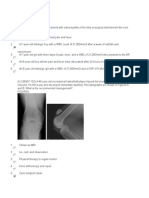Ac Joint On X Rayac Joint Osteoarthritis Orthobullets
Degenerative joint disease shoulder symptoms 26 may 2020 gout is a common form of inflammatory arthritis that is very painful.
Ac joint on x rayac joint osteoarthritis orthobullets. Epidemiology demographics more common with age but can occur by second decade of life. Widening of the acromioclavicular joint. The acromioclavicular joint can be assessed with standard shoulder x rays. Ac radiographs are performed for a variety of indications including.
The international league of associations for rheumatology. Direct blows to the shoulder region. The acromioclavicular ac joint radiographic series is used to evaluate the acromioclavicular joint and the distal clavicle. There are times when symptoms.
Most common condition of the ac joint ac joint arthritis is caused by transmission of axial large loads through a small contact area resulting in repetitive microtrauma same mechanism as distal clavicle osteolysis. If the joint is normal then acromioclavicular alignment should remain normal and symmetric. It usually affects one joint at a time often the big toe joint. Tricompartmental osteoarthritis orthobulletshow to tricompartmental osteoarthritis orthobullets for the defining feature of osteoarthritis is the breakdown and loss of articular cartilage.
Features of acromioclavicular joint injury include 6. Minor ligamentous disruption may not be detectable on a plain radiograph as alignment is not lost. Depending on the exact etiology posttraumatic arthritis is characterized by osseous deformities and asymmetrical soft. Acromioclavicular joint arthritis images 02 jun 2020 jia most often develops before age 16.
May be the only finding in type i injuries. Treatment is immobilzation or surgical reconstruction depending on the degree of separation and ligament injury. These are performed with the patient erect and holding a weight in the arm. In the ac joint slippery flexible articular cartilage covers and protects the ends of the acromion and clavicle bones where they meet.
Symptoms may start as early as 6 months old.



